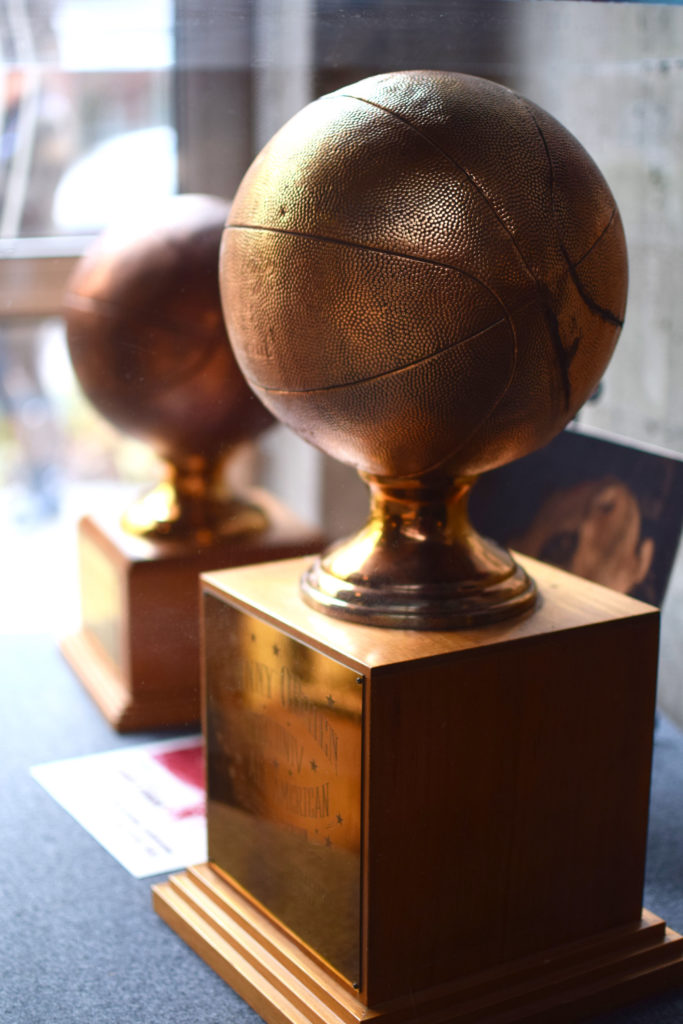Athletics Funding: Basketball on top while Tennis trails
As the recipient of the largest athletic budget on campus and one of the four fully funded athletic teams of Seattle University, the men’s basketball team enjoys many perks that come with the title. The most obvious one is their ability to play at Key Arena, a lease that costs upwards of $20,000 per game.
The men’s tennis team on the other hand, is granted the lowest budget and plays at Sand Point Country Club, a 25 minute drive from campus without traffic.
Athletic Director of Finance Mai Nguyen said that there is no single factor that decides a team’s annual budget.
“It’s not a straight answer. It’s hard because there’s so many variables into deciding a budget for a team and what the NCAA regulations allow us to do,” she said.
Nguyen said that the department takes into account the team’s given schedule for the season, amount of staff necessary and the overall cost of production of a game. Team performance does not play into allocation of a team’s budget.
Location of competitions is especially important, Nguyen said. Being in the Western Athletic Conference means that some competition locations can be particularly costly to get to. Outside of staff salaries, travel is the highest cost of all teams throughout Seattle U.
The golf, baseball, men’s basketball and men’s and women’s tennis teams all drive themselves to their offsite home competitions, as those locations are considered local travel and are therefore not allocated for in the budget.
Four of the 18 athletic teams at Seattle U are fully funded, meaning they meet the maximum number of NCAA allowed scholarships for athletes on the team. These teams are volleyball, softball and men’s and women’s basketball. With this title comes NCAA regulations that deem a certain amount of staff necessary to support fully funded teams.
Teams are given an operating budget from the university, which comes largely from students’ tuition. From there, coaches have complete control over disbursement of the budget and use it for travel and recruiting, as well as day to day activities such as apparel, coaching staff and feeding athletes before and after competitions.
This budget serves as a starting block for teams, and is then supplemented by fundraising that comes in from outside of the university. Nguyen emphasized that Seattle U has always had low investments in athletics compared to other Jesuit schools across the nation.
“Whatever it is in the industry, we’re always behind,” she said, “We’re fundraising for what I consider basic needs.”
When considering operational budget, some teams need additional investments be competitively comparable to other universities’ programs. Seattle U is competing with every other university when it comes to recruiting top athletes, but may not be able to match other schools’ abilities to give recruits as much financial aid or treats such as extra apparel and equipment.
Recruiting is where KeyArena once again becomes relevant, Nguyen said. A home court where the former Seattle Sonics played adds a lot to Seattle U’s basketball brand when it comes to recruiting top talent.
In addition, Nguyen said that it is vital that the men’s basketball team plays at KeyArena due to ticket demand and attendance. The Connelly court can only fit 999 people, which would not fit all the students and ticket holders who come to the men’s basketball games.
“The demand for our tickets and where we can play does not match up,” she said.
Volleyball and women’s basketball, however, do not play at KeyArena due to a lack of season ticket holder demand, Nguyen said. Men’s basketball ticket sales brought in over $200,000, while the women’s team generates $12,000 to $15,000 annually. Nguyen said that this is a trend seen traditionally across the country.
Despite these large numbers, Nguyen said that the university is not planning on expanding athletics any- time in the near future, as the department has been operating at its most efficient due to persistent budget cuts.
Track and field assistant coach Chad Pharis said that his team has the basic necessities for a season, with ideal competition available at the University of Washington—which is considered the home field for the indoor season.
“I think anywhere you go you’re gonna hear, everybody wants more, grass is always greener so to speak,”
Pharis said, “Everybody wants more apparel, everybody would love to go to California for every single meet and travel.”
Pharis has heard from his athletes that they are looking for more individualized care for athletes to improve student athlete welfare.
To address this issue, a portion of the Connelly Center is currently under construction to add an area for academic services for student athletes. This construction is a step in providing additional academic resources, though Pharis noted that athletes have a multitude of physical and academic care services at their disposal.
“We don’t have any rock really unturned,” he said, “Every year we’re actually doing what we do better, and that’s all that we can really do, is just keep improving.”
Sofía may be reached at
swells@su-spectator.com


